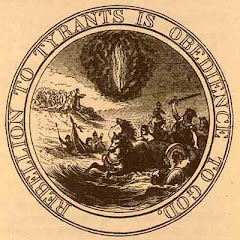Many people are disturbed at Fort Mifflin. To be quite honest, I'm surprised the Philadelphia Airport Authority isn't, given its close proximity to the end of the runway. It's kind of an eerily silent place, a lone historical landmark that attests to a different time and era in American life.
What is Fort Mifflin? In 1771, at the insistence of some, including Benjamin Franklin, that Philadelphia needed protection from pirates, smugglers, and aggression, an artillery emplacement was built on Mud Island. Sort of, anyway. By 1776, the British had pushed Washington's ragtag army out of New York City, New Jersey, and up towards Philadelphia. Washington placed 400 men inside the fortifications tasked with holding up the British long enough so he could go to winter encampment.
The British Navy shelled the fort for days. Eventually, what was left of the defenders, perhaps half, fled the fort. However, they had managed to hold up Howe's advance long enough that he decided to winter in Philadelphia, allowing Washington the desperately needed respite. Sort of. Washington went to Valley Forge, which is another disturbing sight altogether as well as a solemn testimony to tenacity under fire. Ironically, as I crossed the parade ground, a British Airways plane flew overhead.
Mud Island Battery, as it was originally designated, was renamed Fort Mifflin in honor of General Thomas Mifflin whose brigade maintained appearances in Brooklyn while Washington withdrew.
As to why Mifflin disturbed me, well, that's a personal matter. Before leaving the fort, as we were there close to closing time, I explored some of the casemates and the bastion just to one side of the main sally port. After that, I stepped briefly into the kitchen/mess hall, looked immediately to my left and saw an American flag crumpled in a ball and dumped unceremoniously in a dirty windowsill. I was appalled. Just a few days before Memorial Day, this was no way to treat an American flag even if Mifflin was taken in the siege.
Mifflin saved America long enough for Washington to make his escape. Unlike McHenry, there was no capitulation by the British or anthem written by captives offshore. However, this fortification is the longest serving and oldest surviving star fortification in the contiguous united states, having only been abandoned in the 1950s.
Not much of the Fort's original structure remains. What does remain is a feeling, a feeling that I stood on holy ground, made pure when washed with the blood of patriots and tyrants. There was no media circus, no fanfare, and no slieu of tourists. Even a certain prominent member of the GOP didn't pay it a visit. Just a few solitary souls wandered its parapets and a few sweaty sentinels managed it from the safety of shaded offices.






No comments:
Post a Comment